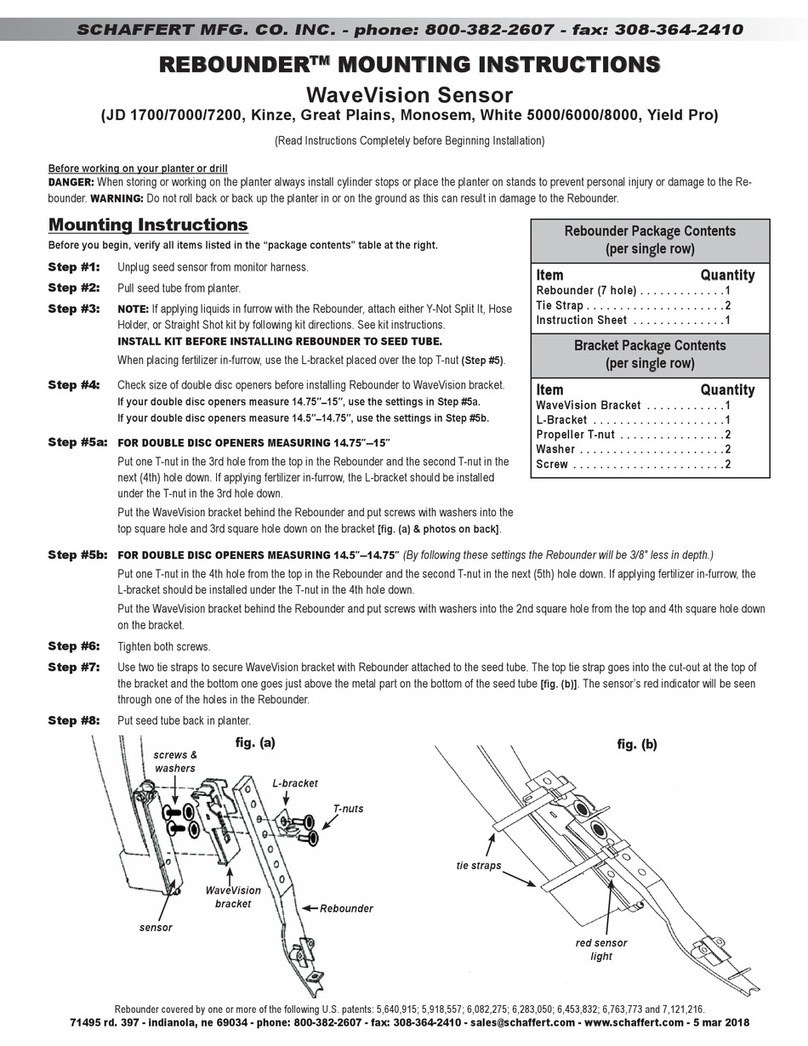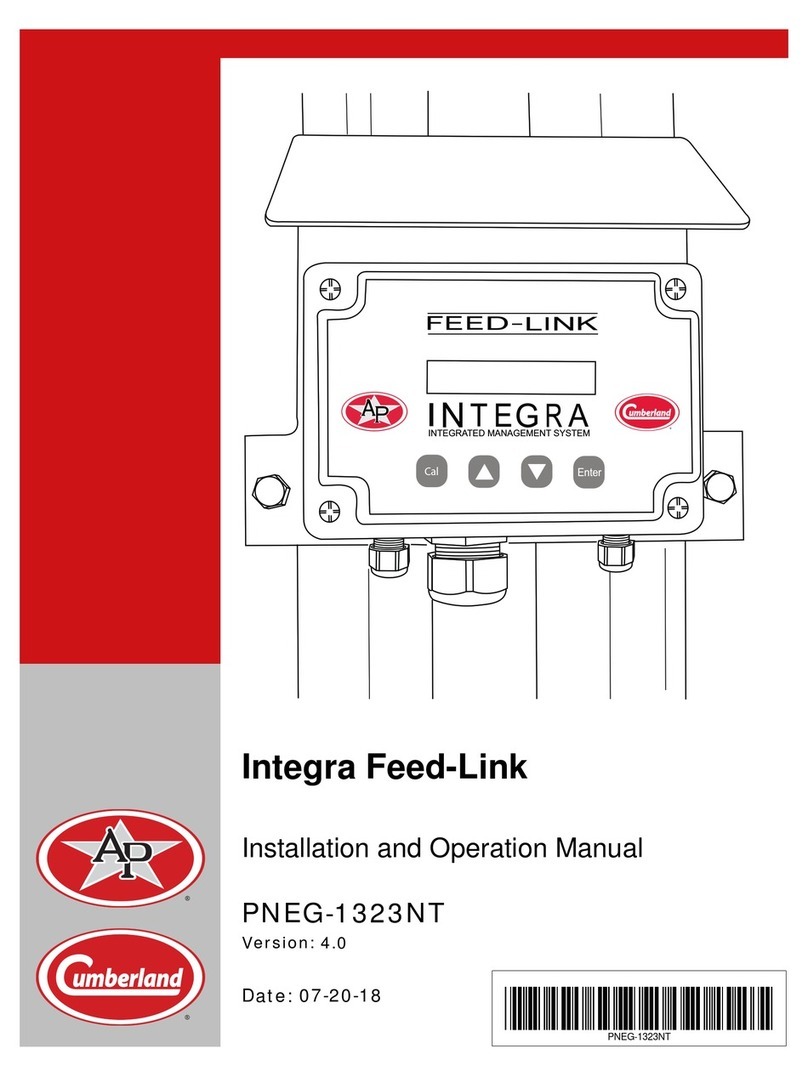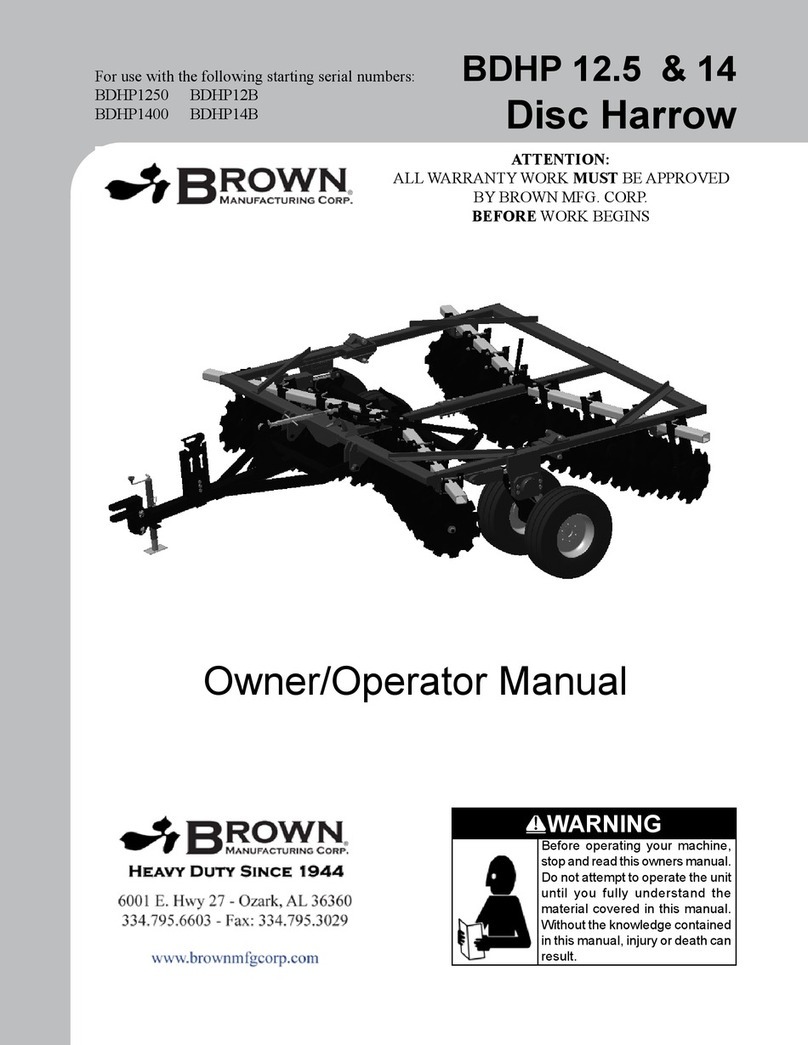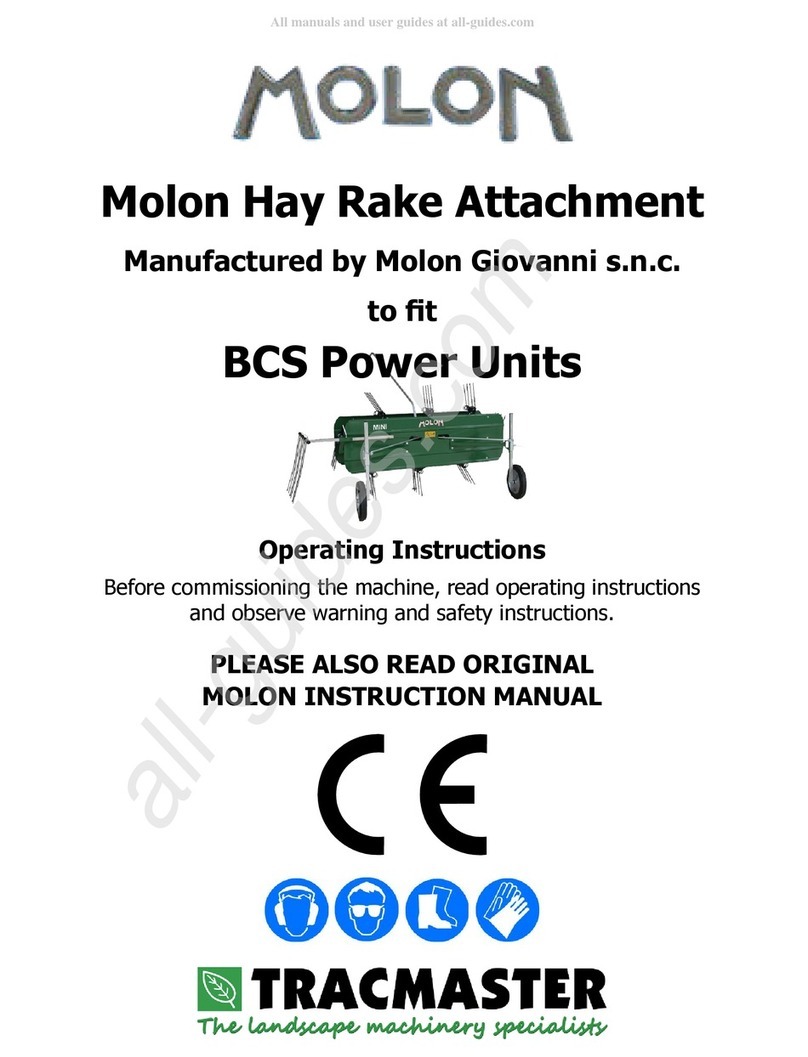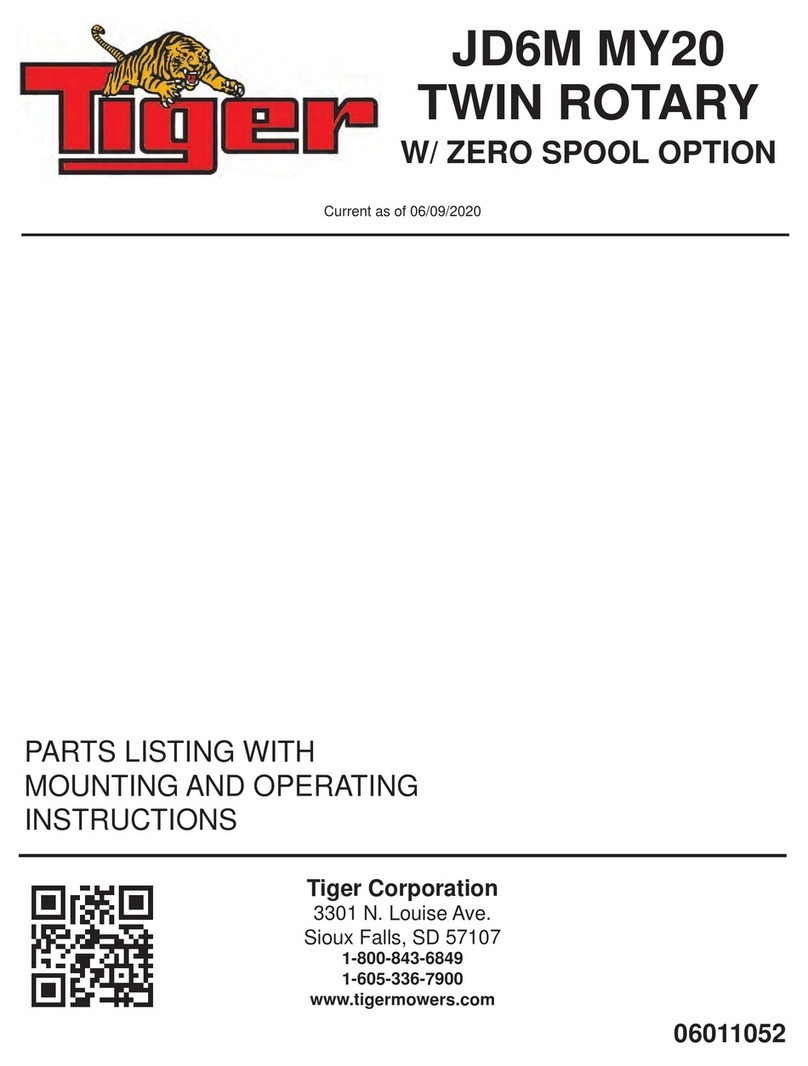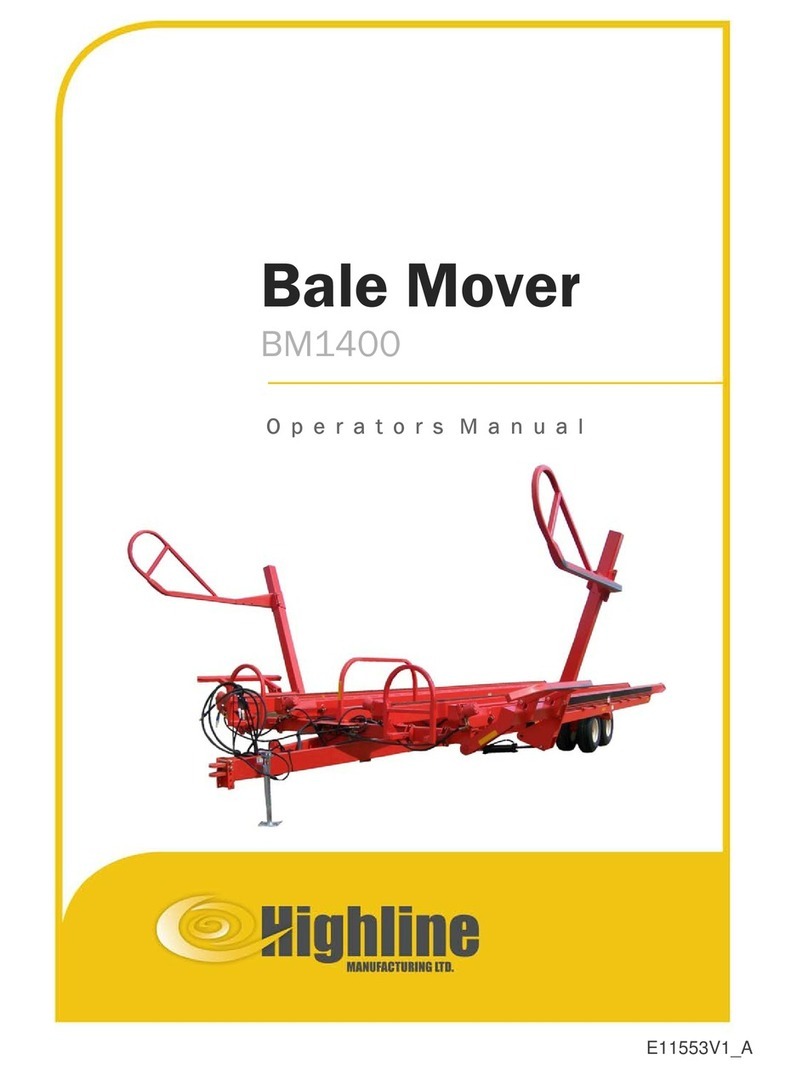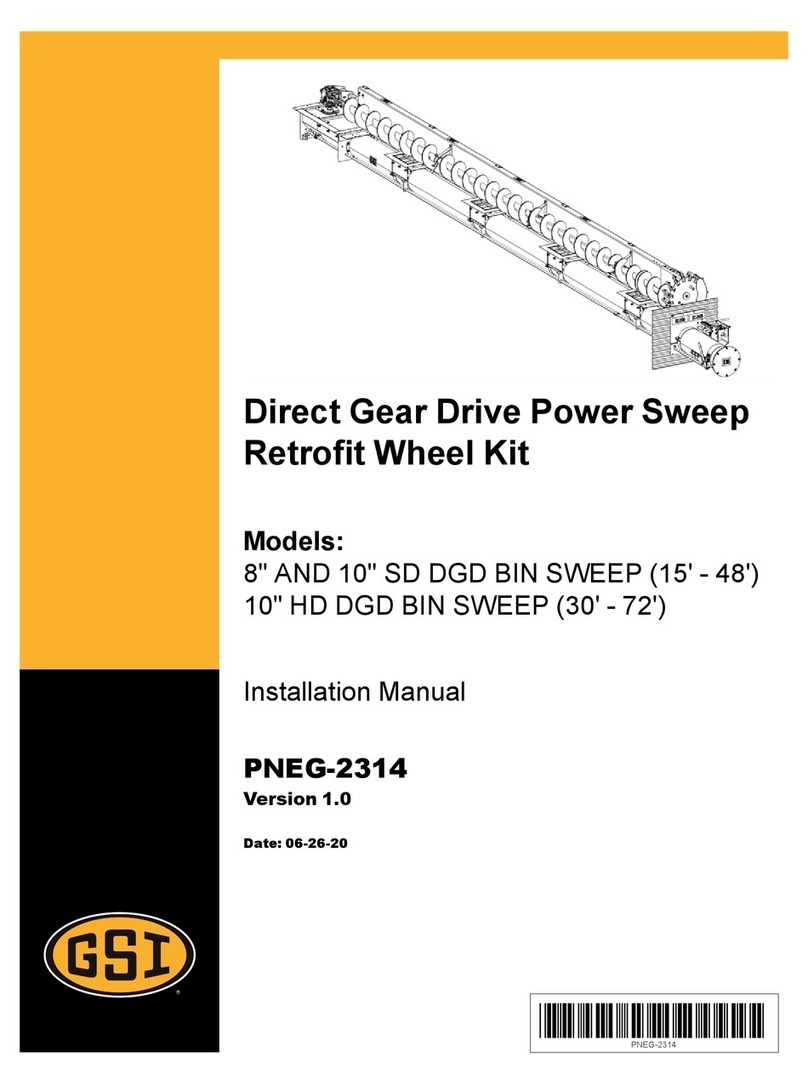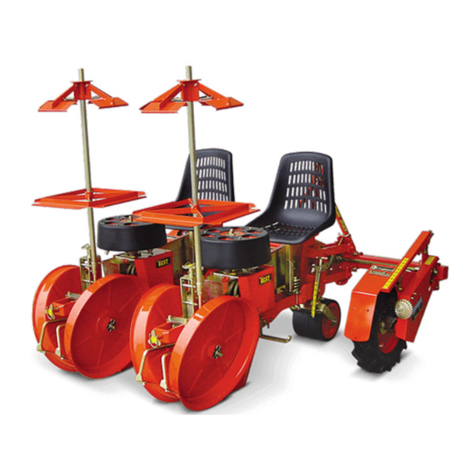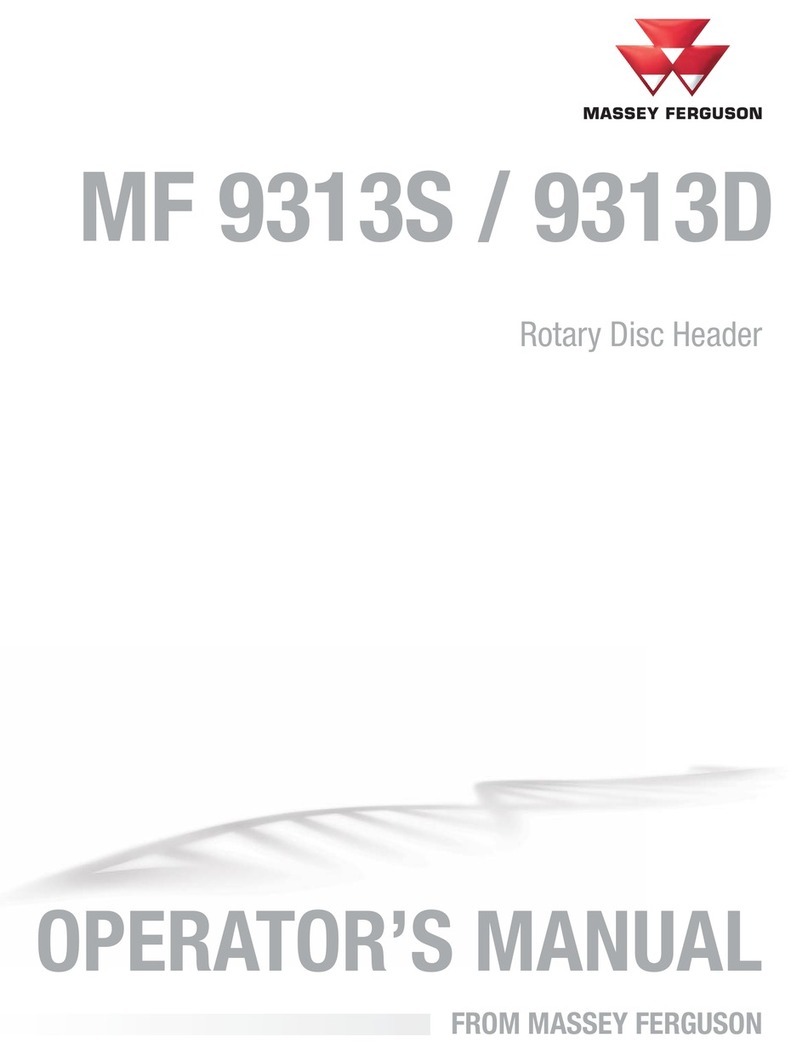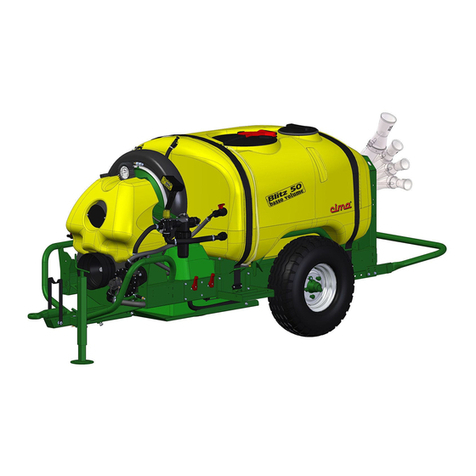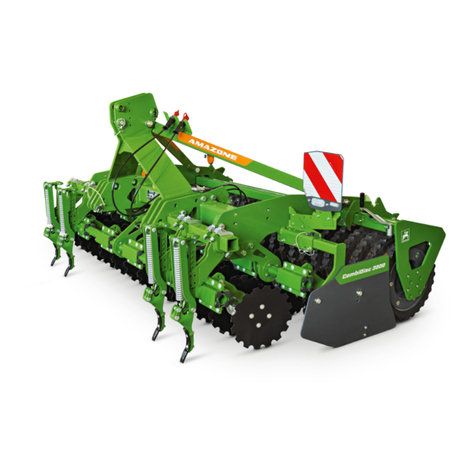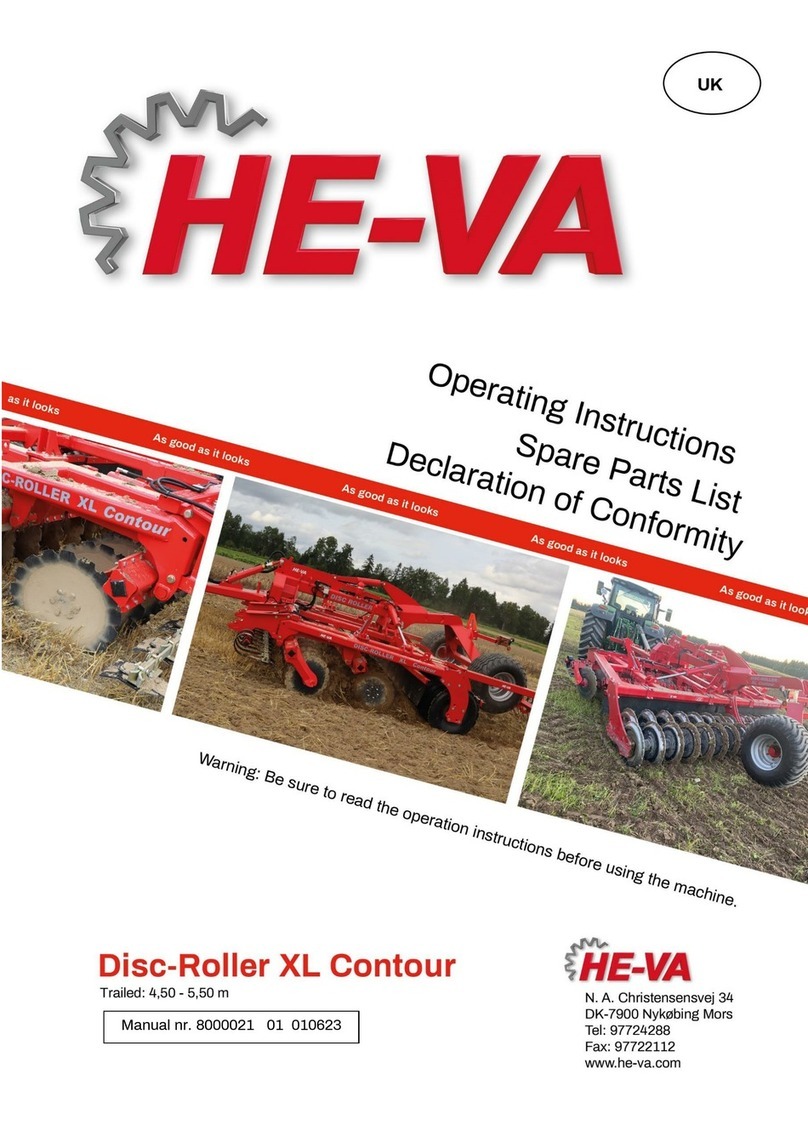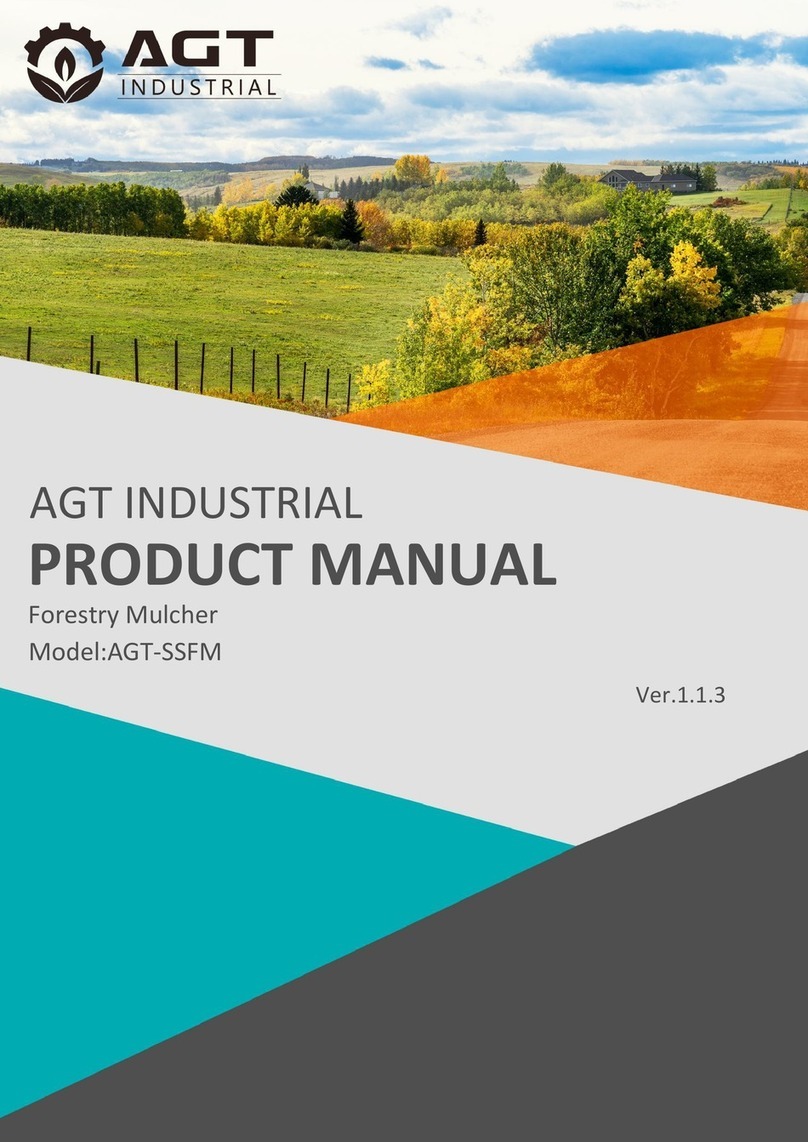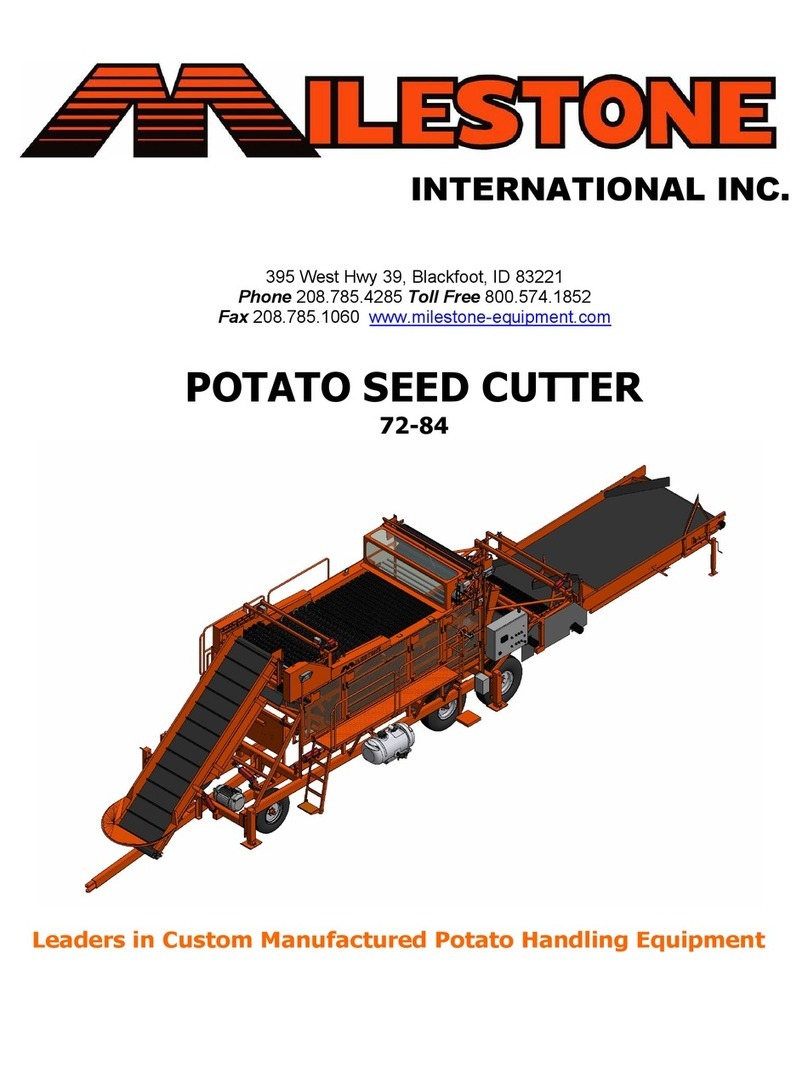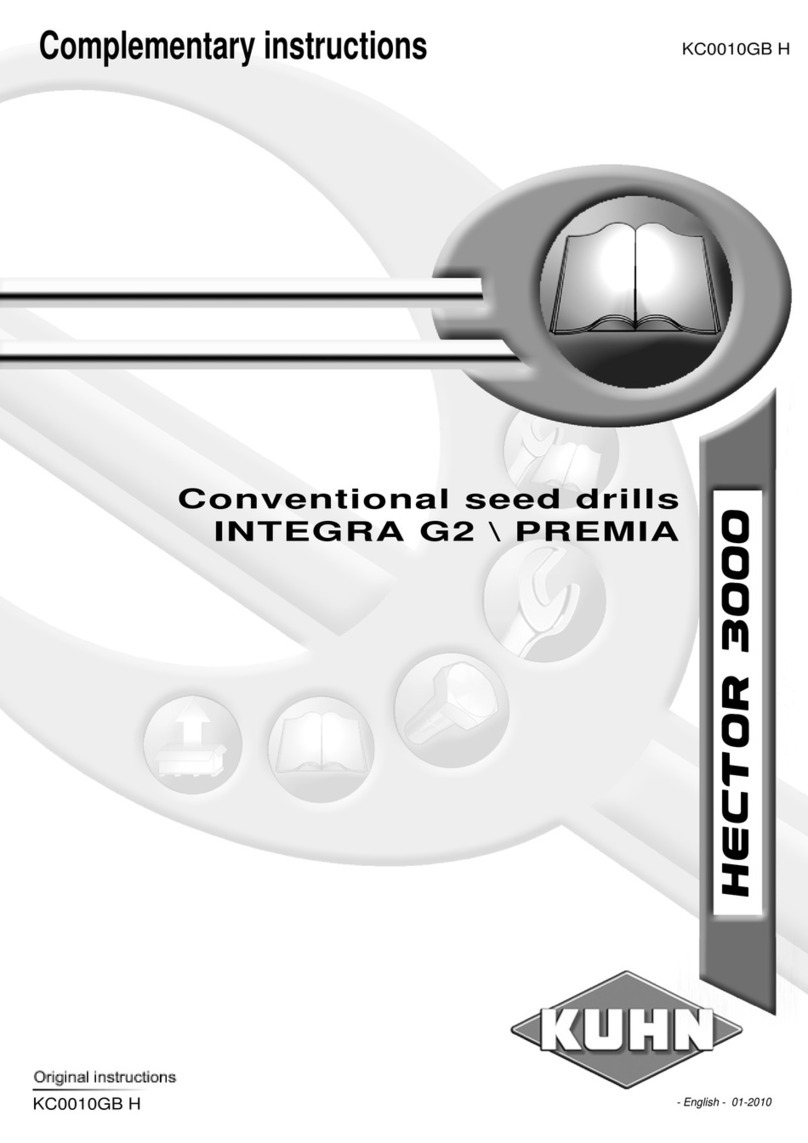
POWER ARM INSPECTION AND MAINTENANCE
A daily equipment inspection of the tractor and mower should be conducted before the
equipment is used. You may use the inspection sheets to assist with these daily
inspections. Any damaged or missing guards should be repaired or replaced before
operating the mower. Failure to repair the damaged shield can result in objects being
thrown from the mower and possibly hitting the operator or bystander.
Inspect the Mower for Safe Operating Condition
Make sure the driveline guards and shielding are in place and in good repair.
Inspect the flexible thrown object shielding to assure that they are in place on the
front and rear of the mower head and in good repair. Repair or replace any
damaged or missing thrown object shields.
Ensure the mower cutting height is set high enough to reduce the possibility of the
mower blades contacting the ground. Actual height will be dependent on the ground
conditions. Increase the height when working in rough or undulating conditions.
Inspect for broken, chipped, bent, missing, or severely worn blades. Replace
damaged blades before operating the mower. Ensure the blade retaining bolts and
fasteners are secure and tight.
Ensure all head bolts and nuts are tight.
Lubricate the driveline universal joints and telescoping members daily.
Grease the rotor and roller bearings and inspect their condition.
Inspect for any oil leaks or damaged hoses
Inspect for worn or damaged decals and safety instructions. Replace unreadable,
damaged or missing safety decals.
Follow the operator’s manual(s) inspection and maintenance instructions for
lubricating parts, and keeping thrown object shielding, driveline guards, rotating
parts shields, mower blades and decals in good repair.
Inspect the Tractor for Safe Operating Condition:
Inspect the controls, lights, SMVs (Slow Moving Vehicle sign), seat belts, and
ROPS to assure that they are in place and in good working order.
Be sure the tires, wheels, lug bolts/nuts are in good condition.
Make sure the tractor brakes and steering are in proper operating condition.
Follow the operator’s manual(s) inspection and maintenance procedures for
keeping the tractor in good and safe condition before operating.
The inspection sheet on the following page should be kept in this book as a record. A
second sheet is included for you to cut out and photocopy.
